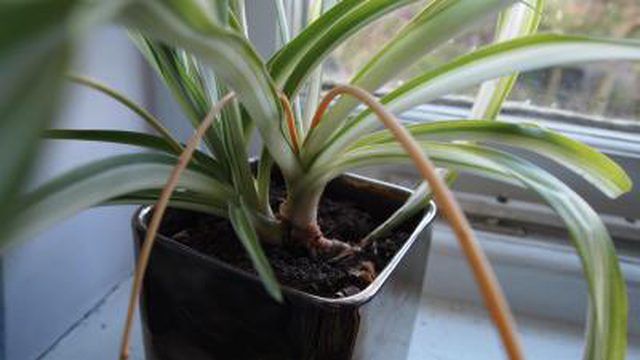Bulbs
Flower Basics
Flower Beds & Specialty Gardens
Flower Garden
Garden Furniture
Garden Gnomes
Garden Seeds
Garden Sheds
Garden Statues
Garden Tools & Supplies
Gardening Basics
Green & Organic
Groundcovers & Vines
Growing Annuals
Growing Basil
Growing Beans
Growing Berries
Growing Blueberries
Growing Cactus
Growing Corn
Growing Cotton
Growing Edibles
Growing Flowers
Growing Garlic
Growing Grapes
Growing Grass
Growing Herbs
Growing Jasmine
Growing Mint
Growing Mushrooms
Orchids
Growing Peanuts
Growing Perennials
Growing Plants
Growing Rosemary
Growing Roses
Growing Strawberries
Growing Sunflowers
Growing Thyme
Growing Tomatoes
Growing Tulips
Growing Vegetables
Herb Basics
Herb Garden
Indoor Growing
Landscaping Basics
Landscaping Patios
Landscaping Plants
Landscaping Shrubs
Landscaping Trees
Landscaping Walks & Pathways
Lawn Basics
Lawn Maintenance
Lawn Mowers
Lawn Ornaments
Lawn Planting
Lawn Tools
Outdoor Growing
Overall Landscape Planning
Pests, Weeds & Problems
Plant Basics
Rock Garden
Rose Garden
Shrubs
Soil
Specialty Gardens
Trees
Vegetable Garden
Yard Maintenance
How to Care for a Spider Plant
How to Care for a Spider Plant. Spider plant (Chlorophytum comosum) earned its common name for the leggy, spiderlike appearance of its offshoots, which dangle on thin, wiry stems from the parent plant. Although best grown as a houseplant, spider plant is hardy outdoors within U.S. Department of Agriculture plant hardiness zones 8 through 11. The...

Spider plant (Chlorophytum comosum) earned its common name for the leggy, spiderlike appearance of its offshoots, which dangle on thin, wiry stems from the parent plant. Although best grown as a houseplant, spider plant is hardy outdoors within U.S. Department of Agriculture plant hardiness zones 8 through 11. The plant thrives despite neglect and usually requires little hands-on maintenance. Regular care, however, helps preserve its appearance and safeguard its long-term health.
Fertilizer Needs
Spider plants possess a dense network of fleshy, rhizomatous roots that hold a large store of nutrients. As a result, most spider plants seldom need feeding. An older plant with exhausted soil or one showing nutrient-deficiency symptoms, such as yellow leaves, slow growth or sparse foliage, may benefit from regular applications of a general-purpose fertilizer. Dissolve 1 1/2 teaspoons of 20-20-20, water-soluble fertilizer in 1 gallon of water. Feed the plant with 1/2 cup of the solution every two weeks during the summer months, applying it to moist soil. Discontinue feeding the plant in autumn and winter.
Seasonal Watering
The water needs of a spider plant vary with the season. It grows actively during the warm spring and summer months before entering dormancy in autumn and winter. Water your spider plant's soil when the upper 1 inch of its soil dries out, saturating the soil until the excess water drains from the plant pot's base or until the top 6 to 12 inches of soil feels moist to you. Reduce watering in autumn and winter, providing just enough water to keep the foliage from wilting. Because spider plant exhibits sensitivity to the chemicals commonly found in tap water, use distilled water or rain water whenever possible. Alternatively, fill a bucket with tap water, and let it sit overnight before using it for watering; tap water's chemicals dissipate during the time the water sits.
Pruning and Grooming
The tidy, grasslike growth habit of the spider plant requires little pruning to improve its shape or control its size. Its delicate blades require a little sprucing up if they become dry or damaged, though. Spider plant seldom contracts diseases, but it is still a good idea to sanitize pruning tools such as shears and scissors before pruning by soaking them in a solution that is one-half rubbing alcohol and one-half water for five minutes; then either rinse the tools with clean water or allow them to air-dry. Snip off all damaged blades and stems at their base with shears or scissors. After pruning, gently rake your fingers through the foliage to collect the severed blades, and discard them.
Pest Control
Spider plants may develop infestations of aphids, whiteflies, spider mites and scales. Treat your plant at the first sign of them. Besides sightings of the pests, the symptoms include yellow leaves, honeydew sap and reduced vigor in the plant. A 2-percent insecticidal soap solution works for all common spider plant pests. Dissolve 4 teaspoons of insecticidal soap in 1 quart of water to make a 2-percent solution. Liberally apply the solution with a spray bottle, paying special attention to all crevices and folds where bugs might hide. Rinsing off the soap within two hours after each treatment helps prevent damage to foliage. Reapply the solution every four to seven days until the problem subsides.
Outdoor Specimen
Indoor and outdoor spider plants share the same cultural requirements. An outdoor plant, however, may suffer damage in cold weather when grown outside its USDA hardiness zone range. The best course of action is to move a spider plant indoors if temperatures below 25 degrees Fahrenheit are forecast. Otherwise, cover a garden-grown specimen with a lightweight cloth or other breathable mulch overnight to protect it from the worst of the cold, but some of the plant's foliage still may be damaged.